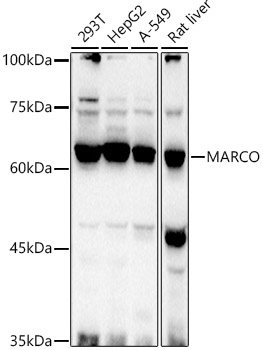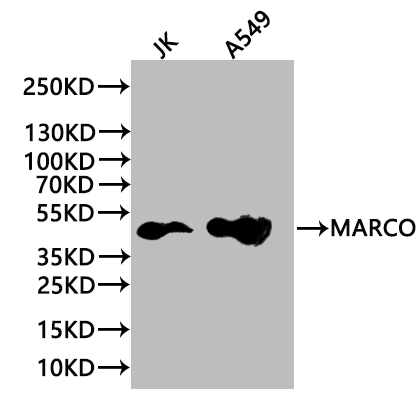Marco antibody [PLK-1]
GTX54470
ApplicationsFlow Cytometry, ImmunoFluorescence, ImmunoPrecipitation, Western Blot, ImmunoCytoChemistry, ImmunoHistoChemistry, ImmunoHistoChemistry Frozen, Neutralisation/Blocking
Product group Antibodies
ReactivityBovine, Human
TargetMARCO
Overview
- SupplierGeneTex
- Product NameMarco antibody [PLK-1]
- Delivery Days Customer9
- Application Supplier NoteICC/IF: 0.6 microg/ml. IHC-Fr: 5microg/ml. *Optimal dilutions/concentrations should be determined by the researcher.Not tested in other applications.
- ApplicationsFlow Cytometry, ImmunoFluorescence, ImmunoPrecipitation, Western Blot, ImmunoCytoChemistry, ImmunoHistoChemistry, ImmunoHistoChemistry Frozen, Neutralisation/Blocking
- CertificationResearch Use Only
- ClonalityMonoclonal
- Clone IDPLK-1
- Concentration100 ug/ml
- ConjugateUnconjugated
- Gene ID8685
- Target nameMARCO
- Target descriptionmacrophage receptor with collagenous structure
- Target synonymsSCARA2, SR-A6, macrophage receptor MARCO, scavenger receptor class A, member 2
- HostMouse
- IsotypeIgG3
- Protein IDQ9UEW3
- Protein NameMacrophage receptor MARCO
- Scientific DescriptionThe protein encoded by this gene is a member of the class A scavenger receptor family and is part of the innate antimicrobial immune system. The protein may bind both Gram-negative and Gram-positive bacteria via an extracellular, C-terminal, scavenger receptor cysteine-rich (SRCR) domain. In addition to short cytoplasmic and transmembrane domains, there is an extracellular spacer domain and a long, extracellular collagenous domain. The protein may form a trimeric molecule by the association of the collagenous domains of three identical polypeptide chains. [provided by RefSeq, Jul 2008]
- ReactivityBovine, Human
- Storage Instruction2°C to 8°C
- UNSPSC12352203






